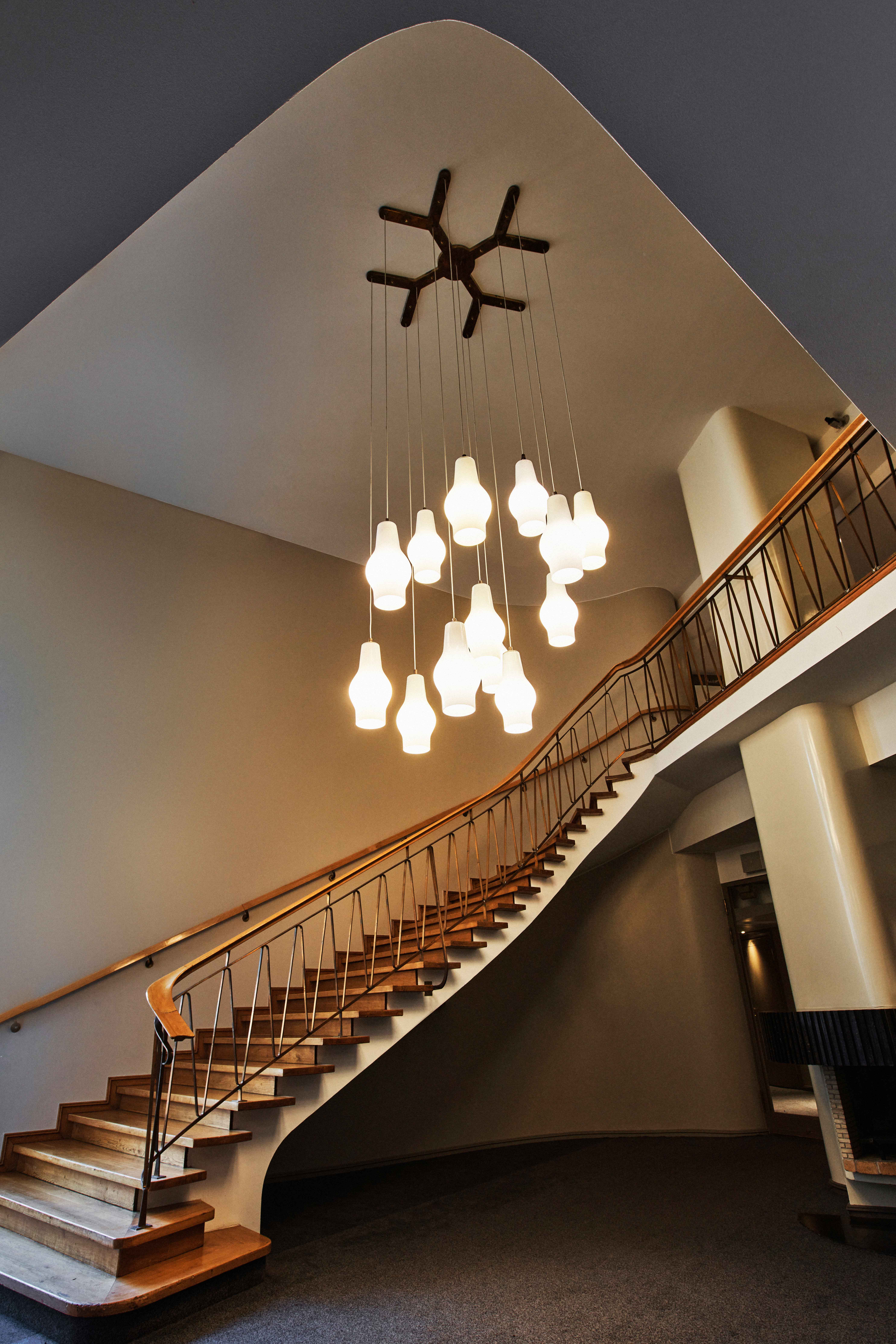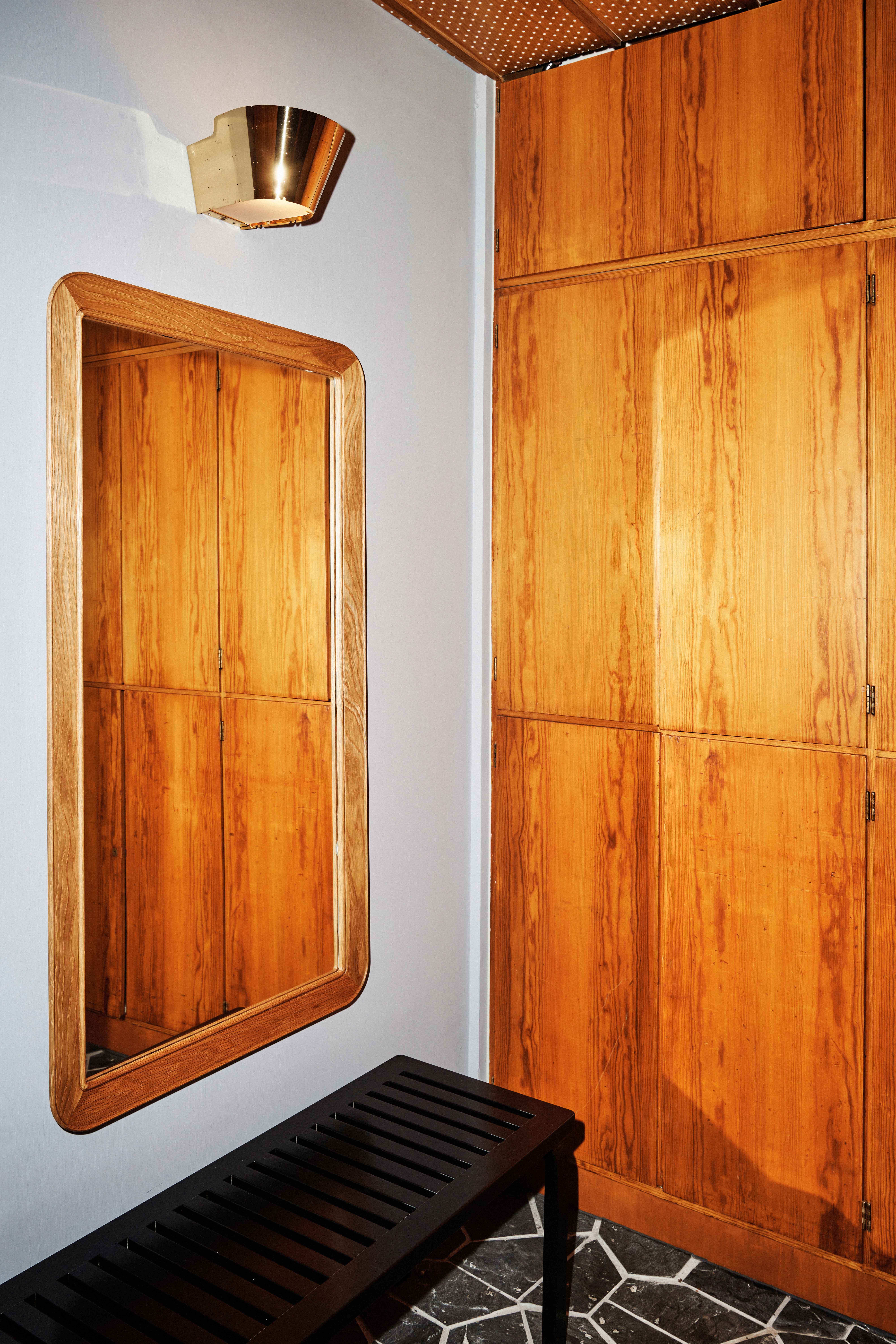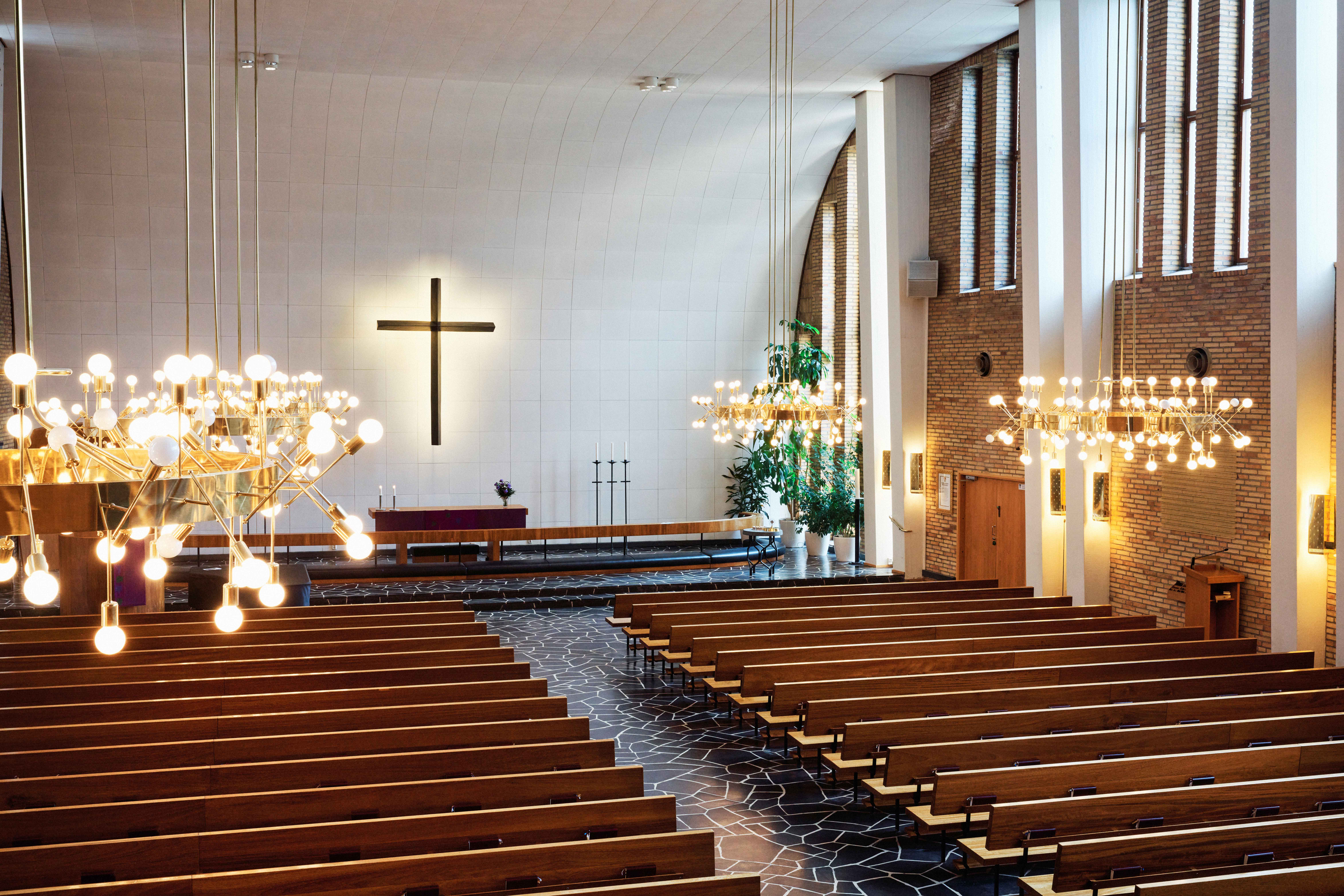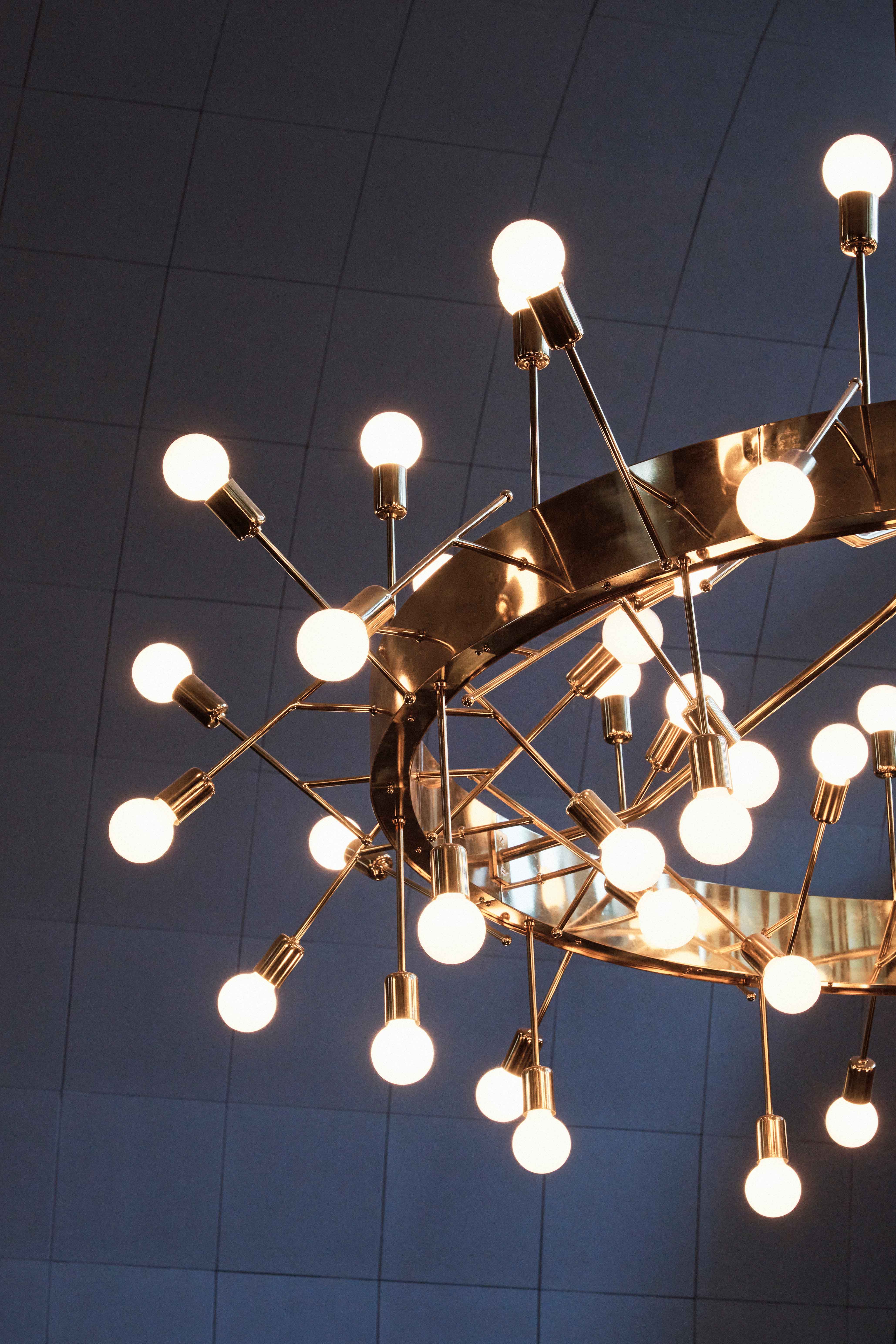Tour Helsinki through Paavo Tynell’s lights
Paavo Tynell’s legendary lights – now also available as design reissues from Gubi – illuminate Helsinki’s most prestigious public spaces and institutions

Danish design house Gubi is reissuing a series of Paavo Tynell creations to expand its existing collection of Tynell designs. Since 1967, Gubi has been bringing timeless modern icons to today’s audience by harnessing contemporary creative talents and craftsmanship. Working closely with Tynell’s family, the company selected some of the designer’s most cherished lighting pieces. The process involved studying original examples and experimenting with materials and equipment to restore his signature brass designs, radiating elegance and industrial efficiency.

‘9209’ table lamp
Tynell (1890 – 1973) was a metalsmith, internationally famed Finnish lighting designer, and co-founder and chief designer of Taito Oy, established in 1818 as the first industrial producer of lighting fixtures in Finland, with the goal of manufacturing objects from gold, silver, bronze, and iron.
With the spread of electricity in the early 20th century, by the 1940s, 99 per cent of the dwellings in Helsinki had electric lights, and streets were lit at night. Tynell designed lights for many monumental buildings in his homeland and abroad. In his time, light must have symbolised hope, warmth, comfort, prosperity, vision, and life itself.

‘9205’ table lamp
'It is wonderful that Gubi is returning our father’s designs to production after so many decades,' says Pekka Tynell, son of Paavo Tynell. 'He had such a tremendous impact on the design story of Finland and on lighting around the globe, so it’s important both to design lovers worldwide and to us as a family that his legacy is honoured in this way.'

‘1967/A1967’ and ‘1972/A1972’ pendants
This year, Gubi brings back several Tynell designs, from the ‘9209’ or ‘Kypärä’ table lamp (its nickname meaning 'helmet'), featuring a spun brass shade with intricate triangular perforations, to the ‘9205’ table lamp with canvas or bamboo shades. But the collection also includes a series of brass pendants, and a floor lamp known for its distinctive playful shade shape.
For the occasion, we follow Gubi on a tour of Helsinki's architectural icons, to discover Tynell lighting in action.
A tour of Helsinki through Paavo Tynell lights
Helsinki Central Station

Imagine getting off an intercity train at the Helsinki Central Station, which was designed by Finnish-American architect Eliel Saarinen (1873 – 1950), was inaugurated in 1919, and is considered one of the world’s most beautiful terminals.
Receive our daily digest of inspiration, escapism and design stories from around the world direct to your inbox.

As you enter the massive main hall, you are enveloped with the warm glow emitted from Tynell’s neoclassical chandeliers suspended from the arched, high ceiling. They were installed in the 1950s after a fire destroyed the earlier, more ornately designed lights.
Look up to see the rings of frosted glass cones cinched in the middle with polished brass rings fastened to the large centre loops. On sunny days, the Tynell chandeliers and the shafts of light entering through the dome-shaped window frames create stunning layered patterns of light and shade.
Original Sokos Hotel Vaakuna

Across the street from the train station stands the Original Sokos Vaakuna Hotel, the largest hotel in the Nordic countries at the time of its 1952 opening. It is housed in the Sokos Department Store Building, designed by the architect Erkki Huttunen, who gave Tynell full control of the light fixtures for the property, including the lobby, foyers, guest rooms, and top-floor restaurant. The hotel accommodated international athletes and journalists attending the 1952 Helsinki Olympics.
Inside the lobby, you come face-to-face with a historical interior décor that is fully alive and functional today. Tynell’s cone-shaped brass reading lights with small vertical perforations hug the wood-panelled wall of the circular lobby, set between high-backed chairs.

Floral-patterned glass and brass chandeliers and wall lights in the foyer escort you to the check-in counter, where lamps with small brass cone-shaped shades light the area as guests fill out paperwork.

In the hallways, stairways, and the top-floor restaurant are more of Tynell’s glass-metal chandeliers with variations of the themed designs.
His famous floor lamps, model ‘9602’, with canvas shades, stand in the seating areas of the restaurant floor. Alluring glass-brass chandeliers elevate the dining experience.
Helsinki School of Economics

In the Töölö neighbourhood, less than one kilometre from the Original Sokos Vaakuna Hotel, is what was originally the Helsinki School of Economics, built in 1950 by architects Hugo Harmia and Woldemar Baeckman, which became the Aalto University Executive Education (Aalto EE) in 2020. The massive relief Kauppiaita (meaning ‘merchants’) by ceramicist Michael Schilkin covers the beige brick building’s exterior wall.

Inside, the grand arched ballroom, a highlight of the building, features Tynell’s wall lamps with unique intricate brass wire decorations. He crafted warm-orange copper ceiling lamps for the meeting rooms.
One of the most dramatic interior features is the curved Finnish pine wall bench with Tynell’s lamps embedded in the upper portion. The 2020 restoration brought the important public areas back to their former glory, with over 500 Tynell lamps meticulously preserved, cleaned, and polished.
Meilahti Church

Two kilometres north of the city centre is Meilahti Church, designed by the architect Markus Tavio in 1945, and inaugurated in 1954 with Finnish- and Swedish-language churches under one roof in a tree-lined residential neighbourhood for the city’s growing population. Paavo Tynell designed all the lamps in the church and the altar candelabra.

When I visited recently, the air in the larger church hall was serene. On the front wall in the centre hangs a backlit cross. The six horizontal chandeliers – with spherical glass bulbs set on diagonal brass stems jutting out from the central brass circle – are suspended from the high ceiling and hover above parishioners waiting for mass to begin. These chandeliers are said to resemble the biblical crown of thorns. Perhaps because of the round lightbulbs and warm lights, however, they looked more like halos to me, especially on this day, when most in attendance were young people full of hope at their confirmation service.
Naomi Moriyama is a contributing writer for Wallpaper*. She is co-author of ‘The Sisterhood of the Enchanted Forest: Sustenance, Wisdom & Awakening in Finland's Karelia,’ which explains, through personal journeys, how connections to nature and democratic design principles have helped make Finland the world’s happiest nation. She also co-authored three books on the health benefits of traditional Japanese foods. Naomi is a Tokyo-born New Yorker who spends much time in Helsinki.
-
 Aesthetics and acoustics come together in the Braque speakers from Nocs Design
Aesthetics and acoustics come together in the Braque speakers from Nocs DesignThe Braque speakers bring the art of noise, sitting atop a brushed steel cube that wouldn’t look out of place in a contemporary gallery
-
 Inside the seductive and mischievous relationship between Paul Thek and Peter Hujar
Inside the seductive and mischievous relationship between Paul Thek and Peter HujarUntil now, little has been known about the deep friendship between artist Thek and photographer Hujar, something set to change with the release of their previously unpublished letters and photographs
-
 In addition to brutalist buildings, Alison Smithson designed some of the most creative Christmas cards we've seen
In addition to brutalist buildings, Alison Smithson designed some of the most creative Christmas cards we've seenThe architect’s collection of season’s greetings is on show at the Roca London Gallery, just in time for the holidays
